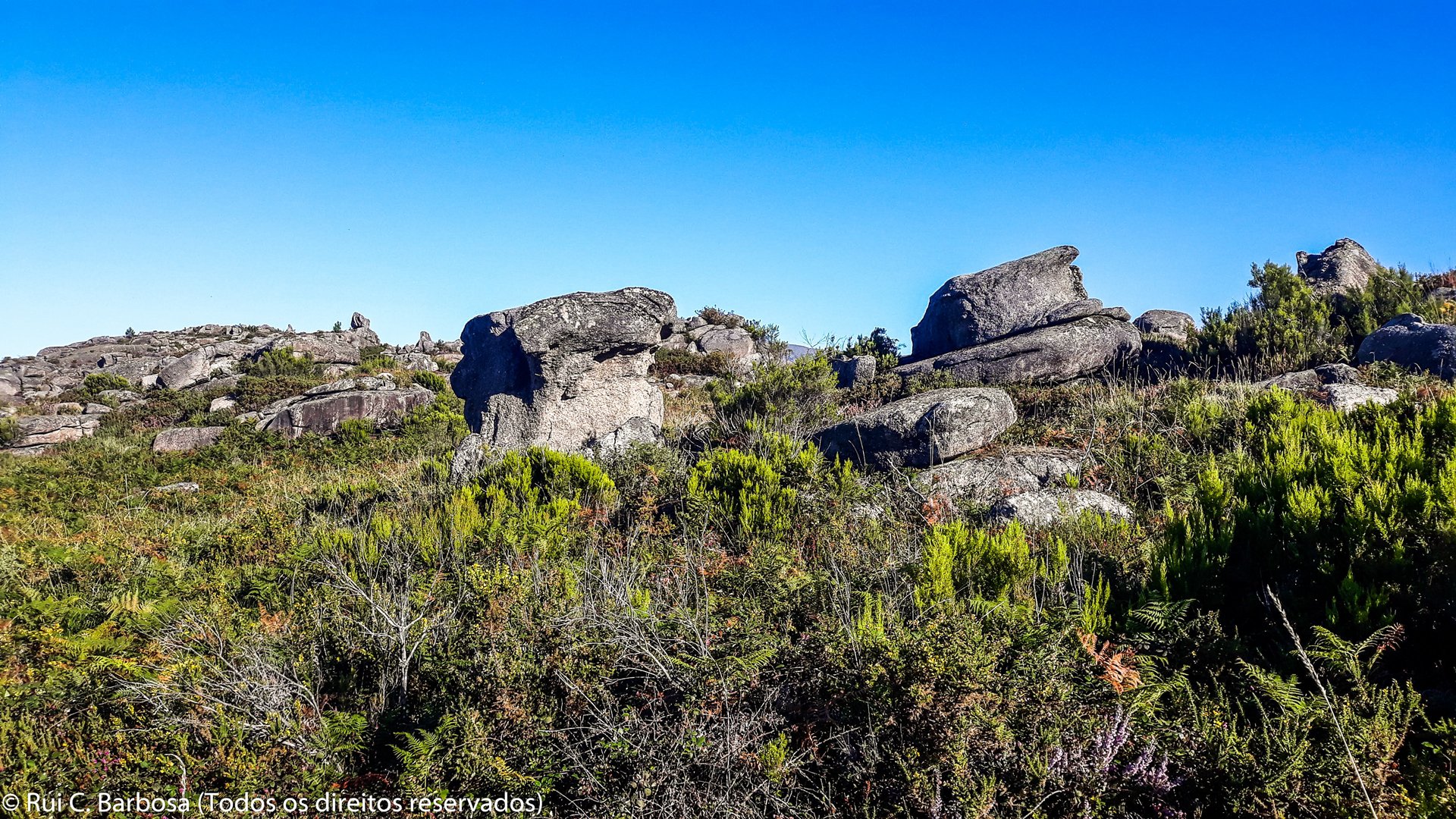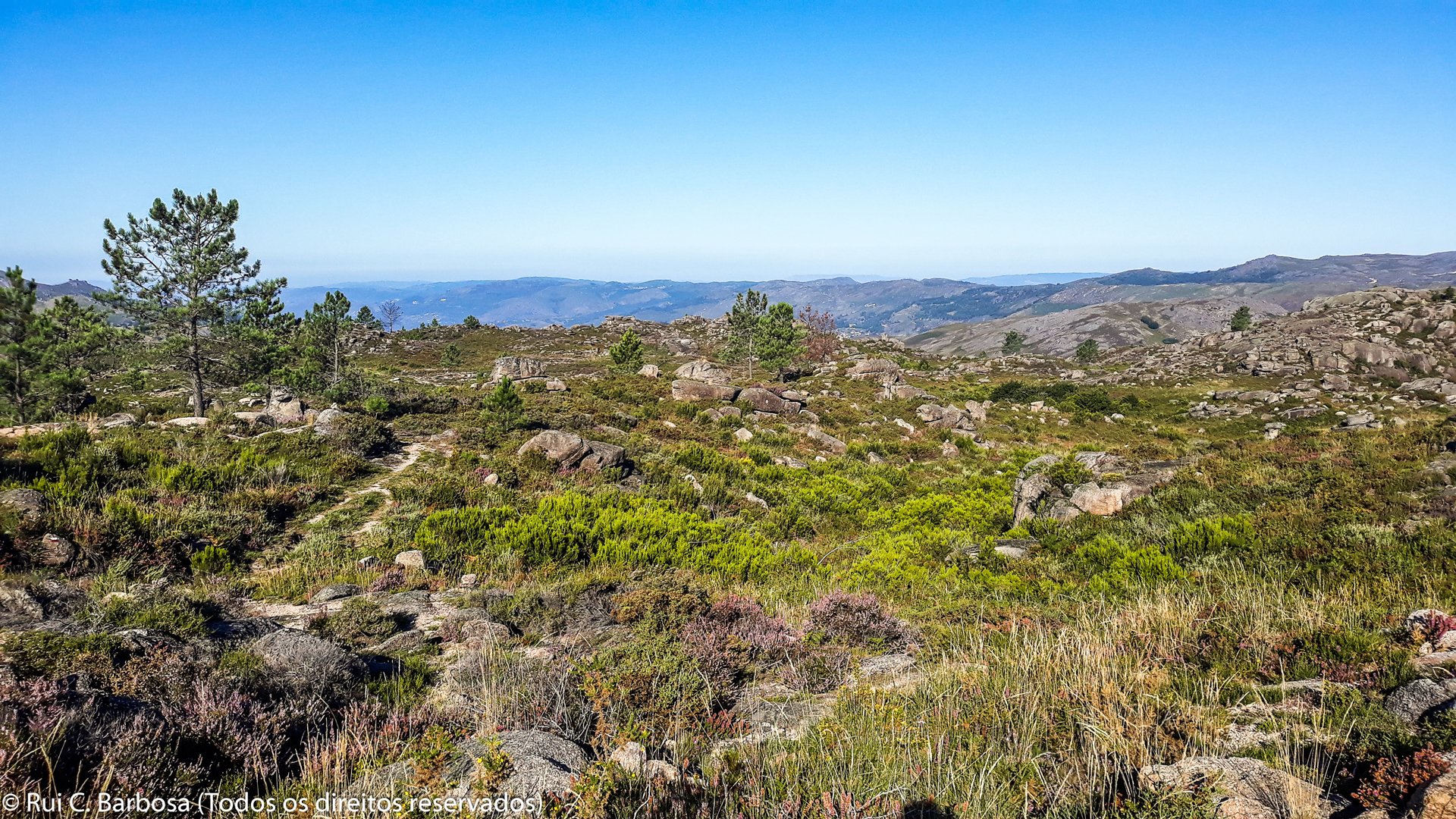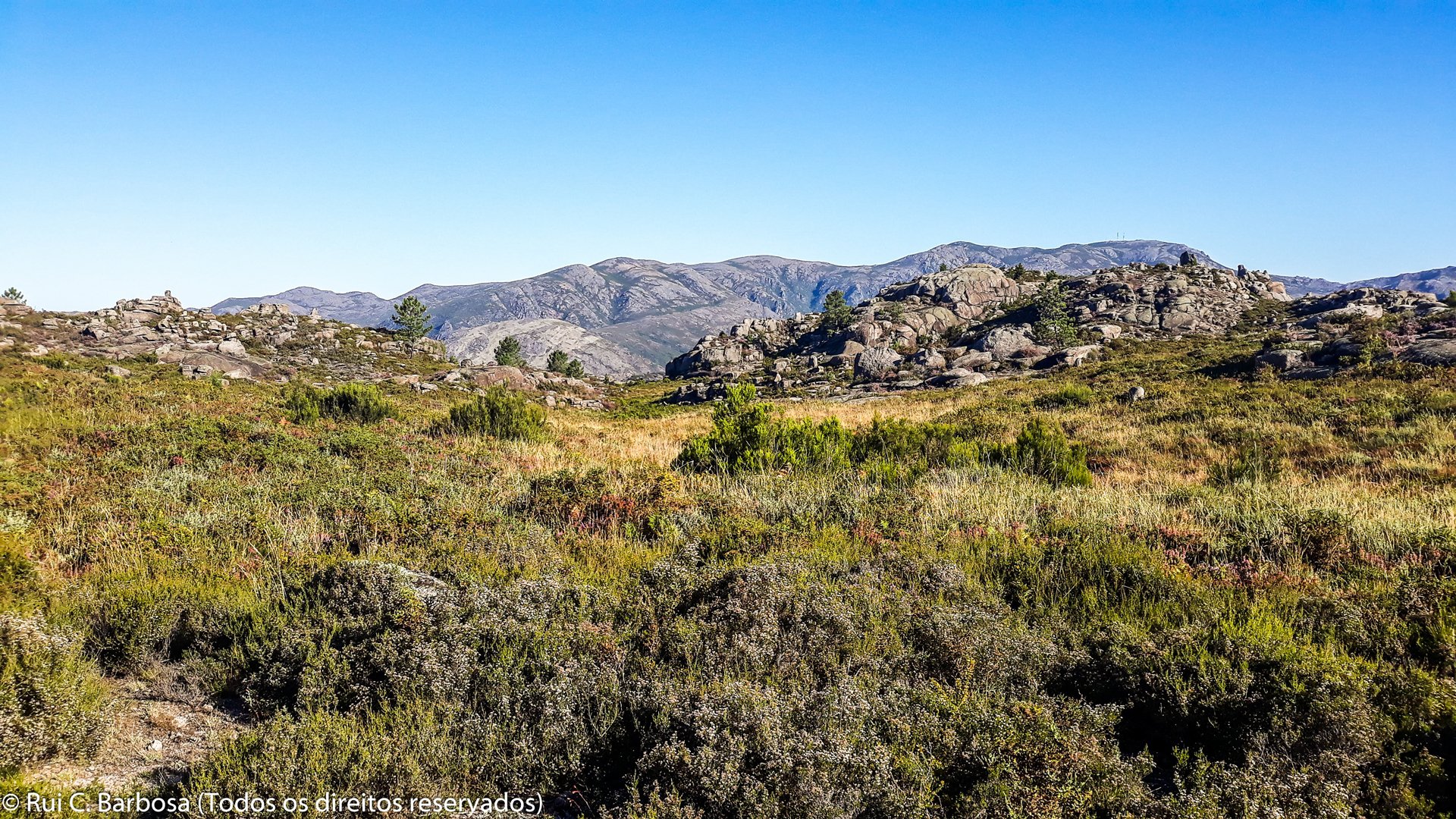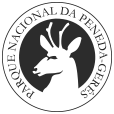At this spot there are plant communities dominated by heather and gorse, together with carqueja and tormentil, common species in the region. This vegetative association is found in areas of acidic rock, such as granites, and high levels of precipitation. Ironically, this type of habitat suffers frequently from fires, which partly explains its significant expansion in the mountains of the National Park, where grazing activity and cleaning of scrub encourage the practice of setting fires.
When in flower the heather-gorse vegetation paints the mountains in yellow and purple, creating a wonderfully colourful mantle, making walking even more enjoyable and photography more alive. Also this same period is a time of heightened activity for many species of wildlife that enjoy this type of habitat. Such habitats host a great diversity of wildlife where frequently traces of the presence of the iberian wolf, deer and wild boar can be found. Birds such as the dartford warbler and stone-chat are to be seen as well as reptiles such as the psammodromus lizard, Lataste’s viper and seoane viper.













